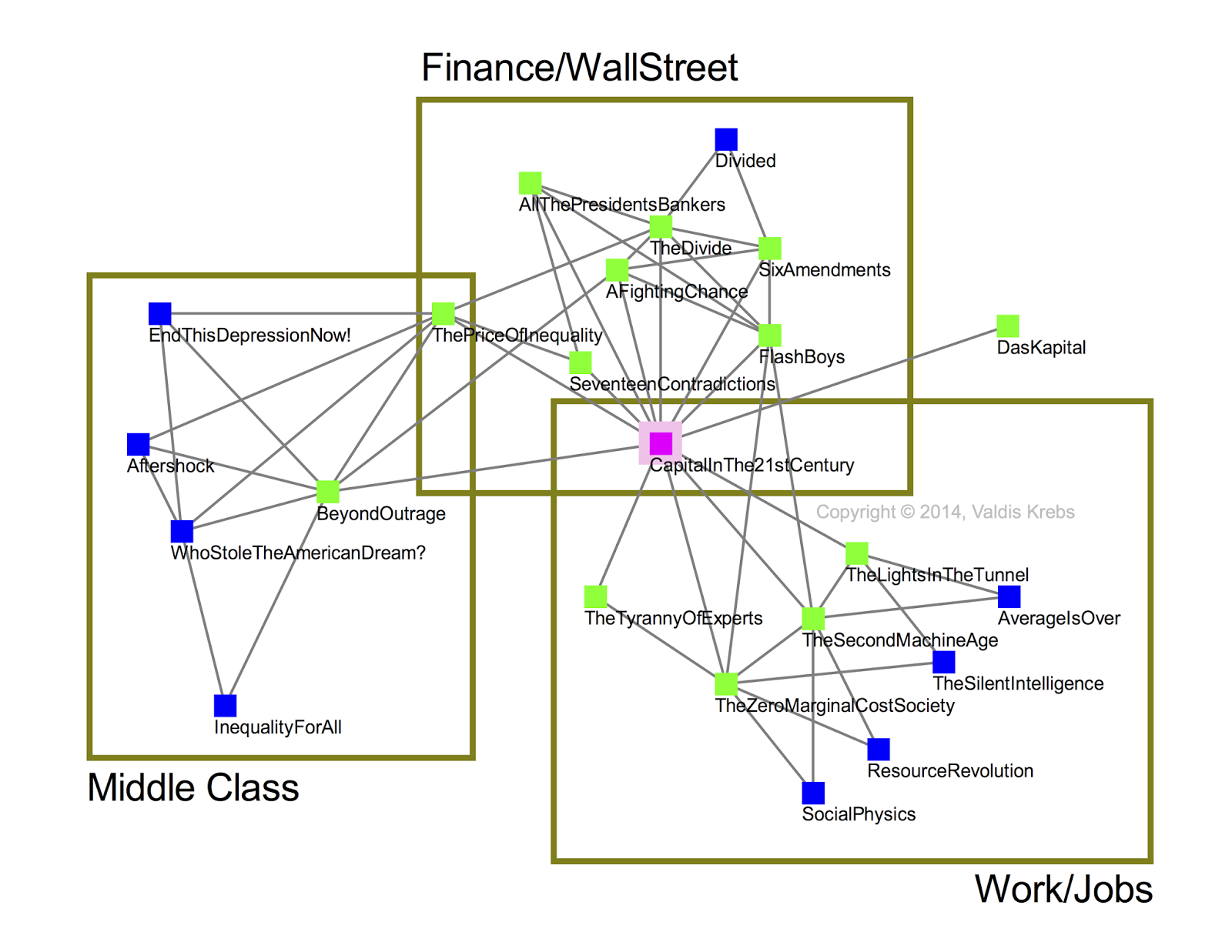Who flocks with the #1 bestseller?
Thomas Piketty's economic tome "Capital in the Twenty-First Century" is causing quite a stir. What is driving the world-wide excitement about an economics book?
- Is it the 200 years of economic data he gathered?
- Is it the simple prose, without the obfuscating calculus of most economic papers?
- Is it the clear graphics that are understood by non-technical readers?
- Or, is it the right topic at the right time?
This book is popular and widely discussed because of all of the above.
The theme of economic inequality is currently a popular conversation in both Europe and the United States. It may soon become a global conversation. Piketty's Capital has attracted both positive and negative feedback — and most agree it is a great work of research. The liberals like it, and the conservatives can't quite kill it. A topic — inequality — that was long avoided in capitalistic economies, is now in the forefront of political and economic discourse.
I wondered... What other books are fans of Capital reading? Is the inequality theme limited to a handful of books, or are there many in the flock? Amazon reveals the network relationship between books via: Customers Who Bought This Item Also Bought… We retrieved Amazon data to reveal the egocentric network map around Piketty's Capital. The map of the book's network neighborhood was created by InFlow software and is shown below.
 |
| Book Network around Capital in the 21st Century |
Piketty's book is the magenta-colored node in the center of the network. The green nodes are books which Amazon reports as having been frequently also-bought by the readers of Capital. The blue nodes are books bought by the readers of the green books —but not directly bought by Capital readers. Two books are joined by a gray link if Amazon reported that they were often bought by the same customers.
Executing InFlow's cluster analysis algorithm reveals three overlapping clusters of books. Each of the three clusters appear within a gold frame. Books/Nodes appearing in two clusters show up in two frames. The intersecting frames reveal a type of Venn diagram of the high level network structure of these similar, yet different books. Each cluster contains a sub-theme on the topic of inequality and is labelled with that description. The 19th century Karl Marx book —Das Kapital — does not appear to cluster with any of the other also-bought books, although it's theme is the same as Piketty's book.
The Inequality network neighborhood seems robust —it includes many best sellers on Amazon, including Flash Boys, The Divide, All the President's Bankers and A Fighting Chance. Each of these books tells the story of how one group excludes others for its own benefit.
Politicians in the upcoming 2014 U.S. midterm elections, and the 2016 U.S. presidential election, may want to pay close attention to this network of books. I suspect the flock will grow larger before the elections. The theme of the upcoming U.S. elections may well be: "It's the Inequality, Stupid!" — a play off the Bill Clinton winning theme of "It's the Economy, Stupid." The centrality of Elizabeth Warren's book, A Fighting Chance, may give her a nudge to be a candidate for President in 2016. Warren's book emerged in that network location not from it's content, but from the choices the buying public made on Amazon.
Reference
Valdis Krebs, « Proxy Networks », Bulletin de méthodologie sociologique, 79 | 2003, 61-70.
No comments:
Post a Comment